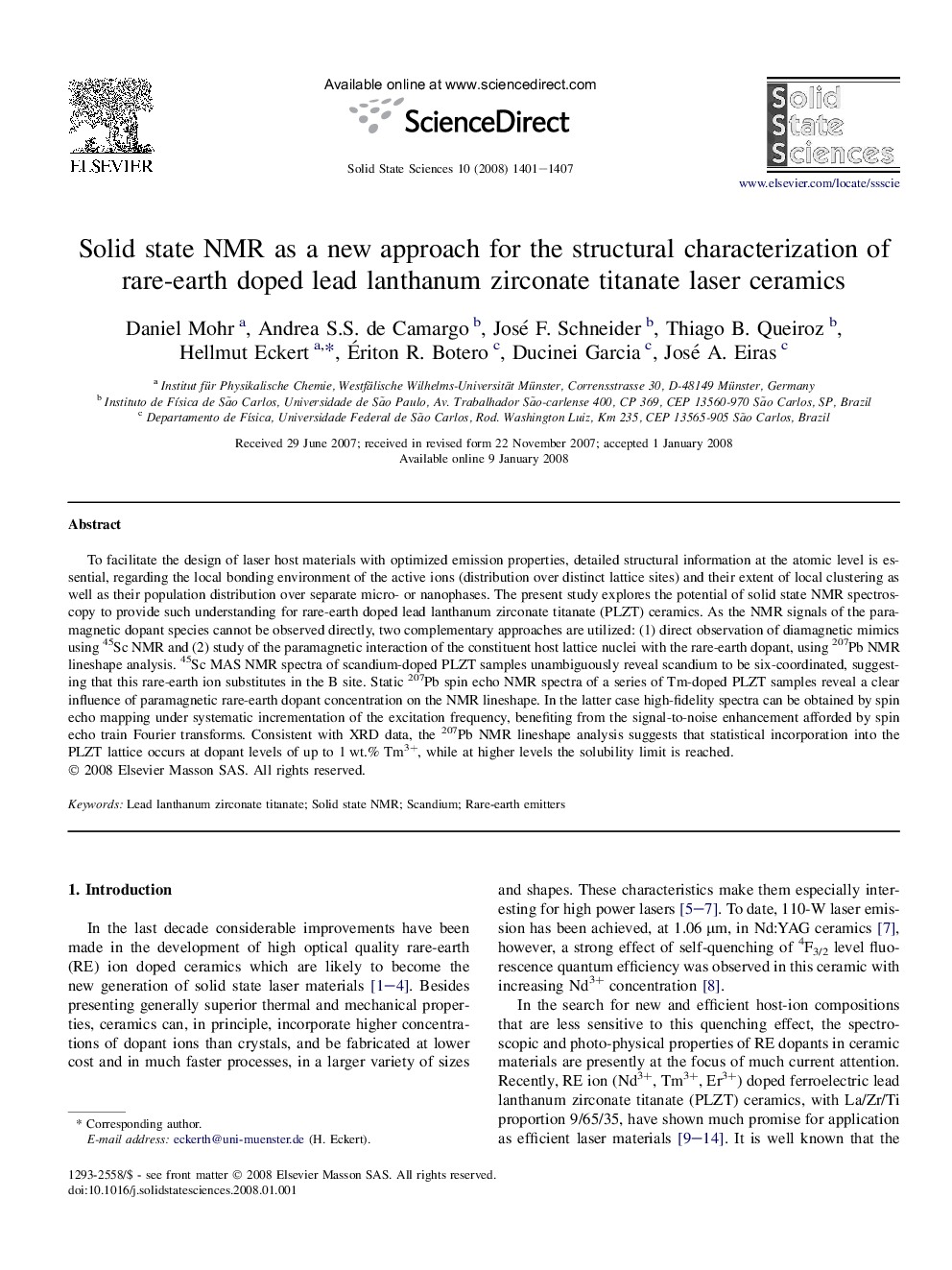| کد مقاله | کد نشریه | سال انتشار | مقاله انگلیسی | نسخه تمام متن |
|---|---|---|---|---|
| 1506715 | 993805 | 2008 | 7 صفحه PDF | دانلود رایگان |

To facilitate the design of laser host materials with optimized emission properties, detailed structural information at the atomic level is essential, regarding the local bonding environment of the active ions (distribution over distinct lattice sites) and their extent of local clustering as well as their population distribution over separate micro- or nanophases. The present study explores the potential of solid state NMR spectroscopy to provide such understanding for rare-earth doped lead lanthanum zirconate titanate (PLZT) ceramics. As the NMR signals of the paramagnetic dopant species cannot be observed directly, two complementary approaches are utilized: (1) direct observation of diamagnetic mimics using 45Sc NMR and (2) study of the paramagnetic interaction of the constituent host lattice nuclei with the rare-earth dopant, using 207Pb NMR lineshape analysis. 45Sc MAS NMR spectra of scandium-doped PLZT samples unambiguously reveal scandium to be six-coordinated, suggesting that this rare-earth ion substitutes in the B site. Static 207Pb spin echo NMR spectra of a series of Tm-doped PLZT samples reveal a clear influence of paramagnetic rare-earth dopant concentration on the NMR lineshape. In the latter case high-fidelity spectra can be obtained by spin echo mapping under systematic incrementation of the excitation frequency, benefiting from the signal-to-noise enhancement afforded by spin echo train Fourier transforms. Consistent with XRD data, the 207Pb NMR lineshape analysis suggests that statistical incorporation into the PLZT lattice occurs at dopant levels of up to 1 wt.% Tm3+, while at higher levels the solubility limit is reached.
The spatial distribution of the rare-earth ions in doped PLZT laser materials can be followed by solid state NMR. The compositional evolution of the average 207Pb shift correlates well with the appearance of secondary phases in XRD data.Figure optionsDownload as PowerPoint slide
Journal: Solid State Sciences - Volume 10, Issue 10, October 2008, Pages 1401–1407